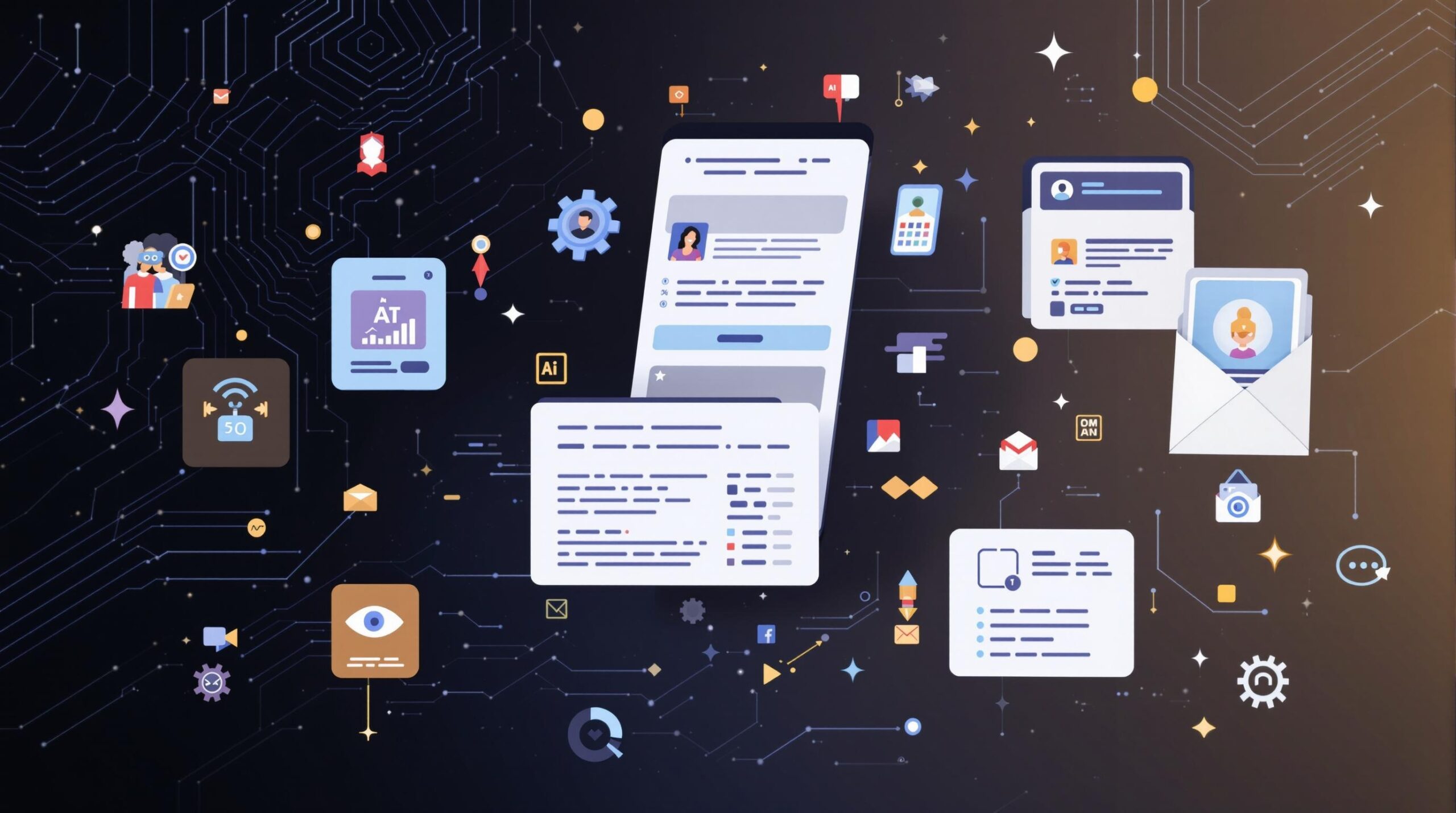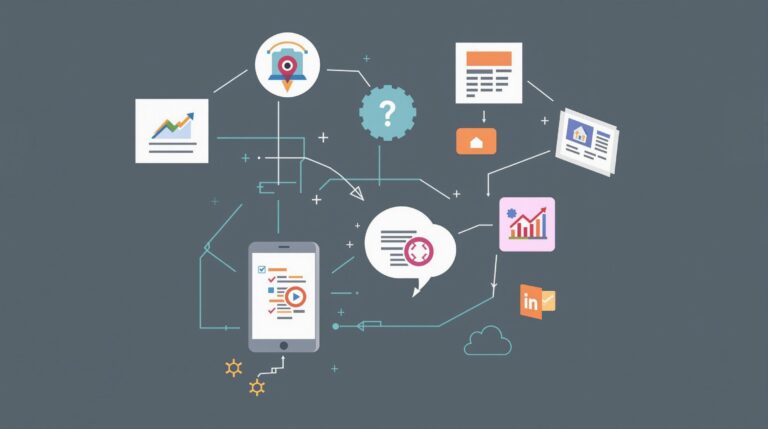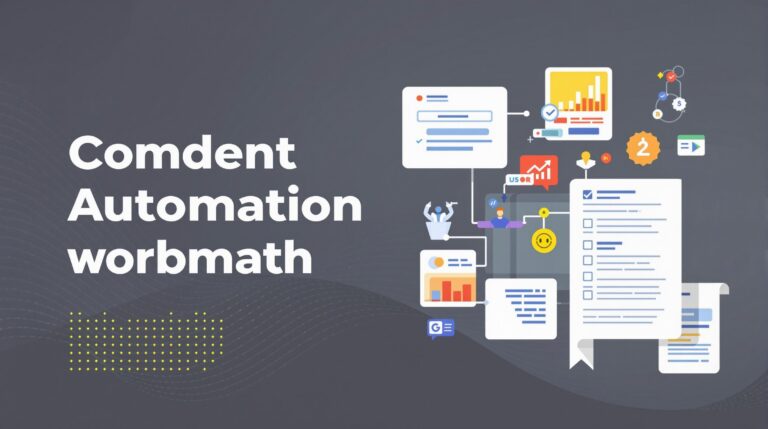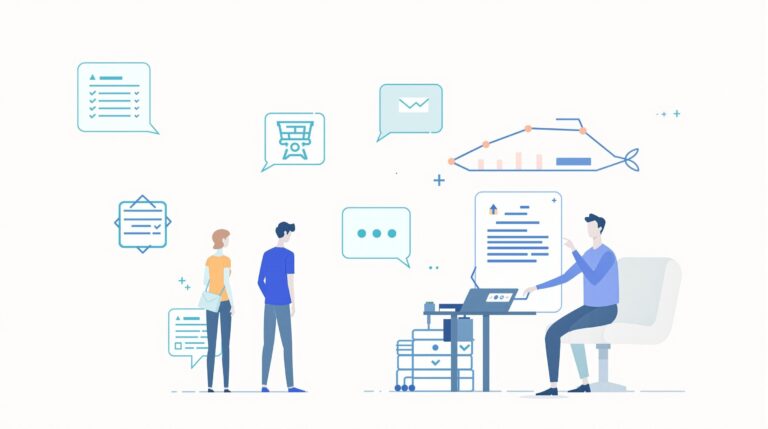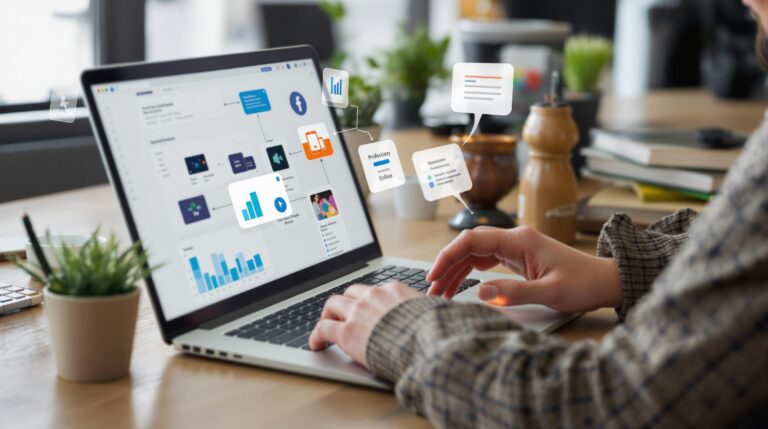AI-Powered Email Marketing: How to Automate Your Campaigns
AI has revolutionized email marketing by enabling brands to create hyper-personalized campaigns that respond to individual behaviors and preferences at scale. Modern automated email marketing solutions leverage machine learning and predictive analytics to optimize everything from send times to subject lines, resulting in significantly higher engagement and conversion rates than traditional methods.
Key Takeaways
- Automated emails generate 41% of all email orders despite representing only 2% of total sends
- AI-driven personalization improves open rates by 22% on average through tailored subject lines and content
- The highest converting automated emails are back-in-stock notifications (5.84% conversion rate), followed by welcome emails (2.74%)
- AI email copywriting tools can increase click-through rates by up to 30% by crafting personalized narratives
- Businesses using email automation tools report a 451% increase in qualified leads compared to manual campaigns
The Transformative Impact of AI on Email Marketing
The email marketing landscape has been completely transformed by artificial intelligence. What was once a manual, time-consuming process now operates with remarkable efficiency and precision. According to Forbes (2024), 58% of businesses now use some form of automation for their email campaigns – a figure that continues to grow rapidly.
AI brings three core capabilities to email marketing: machine learning that adapts to customer behaviors, predictive analytics that anticipate future actions, and generative AI that creates compelling content. These technologies work together to deliver personalized messaging at precisely the right moment, without demanding constant human oversight.
The numbers make a compelling case for implementation. Omnisend (2023) reports that automated emails account for 41% of all email-generated orders despite representing just 2% of total email sends. This extraordinary efficiency demonstrates why AI-powered systems have become essential rather than optional for competitive businesses.
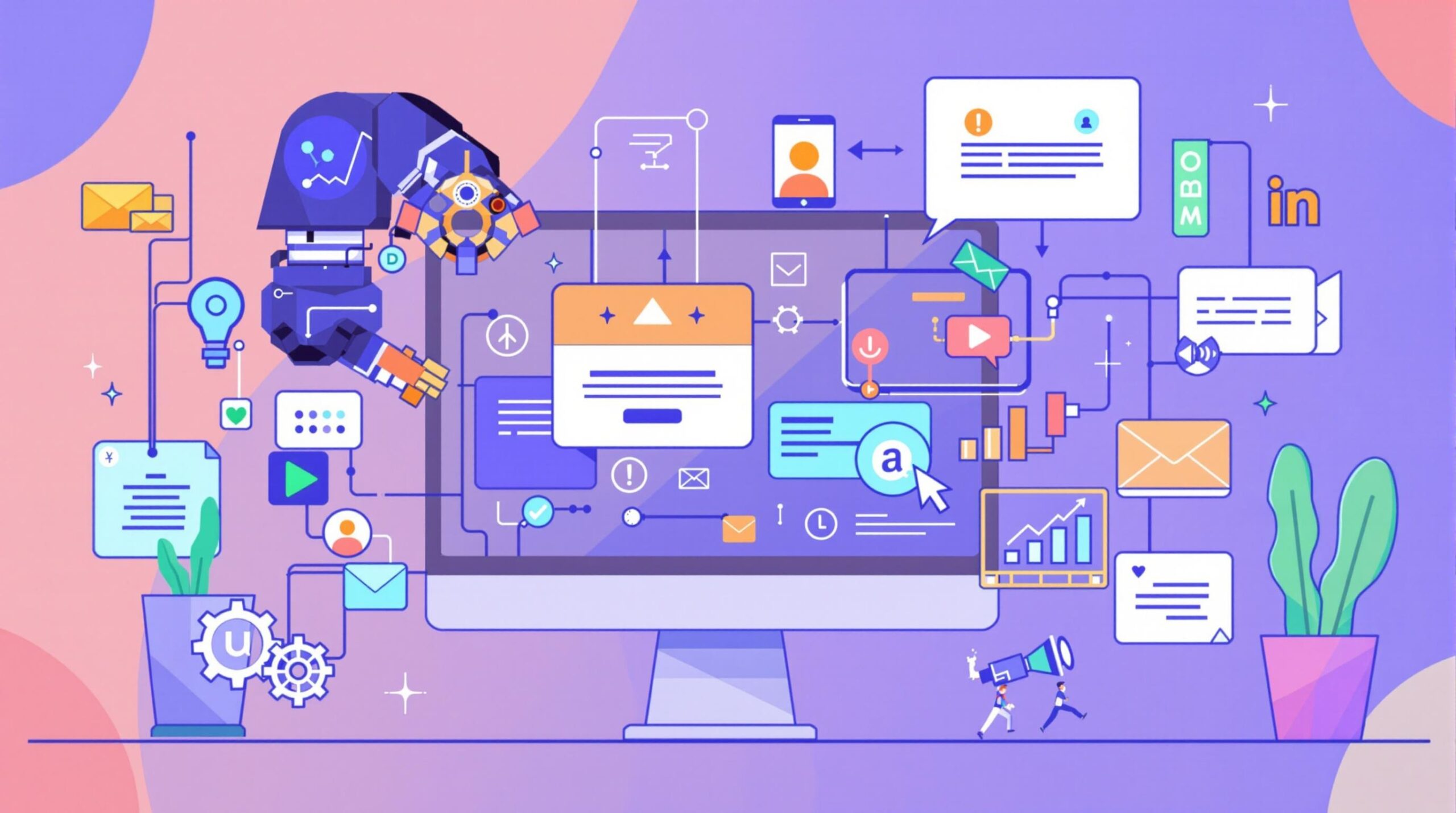
Achieving Hyper-Personalization with AI
The days of “Hello [First Name]” as the extent of email personalization are long gone. Today’s AI systems analyze multiple customer data points simultaneously – purchase history, browsing behavior, engagement patterns, and demographic information – to craft truly individualized messages.
Tools like Klaviyo and Moosend now generate product recommendations and custom narratives tailored to individual preferences. This level of personalization yields impressive results: AI-crafted subject lines improve open rates by 22% on average compared to human-written alternatives.
A standout example comes from Sephora, which increased customer loyalty by 30% through implementing AI-driven personalized product suggestions. Similarly, Phrasee’s AI email copywriting system boosted open rates by 22% across multiple e-commerce clients by generating optimized subject lines based on linguistic patterns and historical performance data.
The key benefit of AI personalization is that it can be applied at scale – creating thousands of personalized AI marketing messages that would be impossible to produce manually.
Optimize Campaign Performance with Automated Intelligence
AI doesn’t just personalize content – it optimizes when and how that content reaches your audience. Platforms like Mailchimp and HubSpot use predictive send-time optimization to determine exactly when each subscriber is most likely to engage with an email.
The impact of this optimization is substantial:
- AI-optimized send times boost open rates by 42.1%
- Click-through rates increase by 5.4% on average
- AI-powered segmentation improves click rates by 50% compared to manual methods
Under Armour provides a compelling case study in this area. After implementing AI-driven send-time optimization, the brand saw engagement increase by 35% and unsubscribe rates drop by 12%. The algorithm identified individual engagement windows for each subscriber, ensuring messages arrived when recipients were most receptive.
A/B testing also benefits tremendously from AI automation. Rather than testing one or two variables manually, automated testing platforms can simultaneously evaluate multiple subject lines, content blocks, images, and calls-to-action. HubSpot’s automated testing features have been shown to improve click rates by 15% by identifying the best-performing combinations.
High-Converting Automated Email Sequences
Not all automated emails perform equally. According to Omnisend (2023), certain triggered email types consistently outperform others in driving conversions:
- Back-in-stock notifications: 5.84% conversion rate
- Welcome emails: 2.74% conversion rate
- Abandoned cart reminders: 2.56% conversion rate
- Order confirmation emails: 2.51% conversion rate
These triggered messages generate 8x more opens and 3x higher earnings than traditional bulk campaigns. The reason is simple: they reach customers at moments of high purchase intent – when they’ve just signed up, abandoned a cart, or shown interest in a previously unavailable product.
Today, 82% of marketers use automation for these triggered emails, resulting in 37% of total email-driven revenue. Omnisend’s platform specializes in automating cart abandonment workflows, combining emails and SMS to recover 37% of lost sales that would otherwise be abandoned.
Implementing these automated email sequences has become substantially easier with modern email automation tools that provide pre-built templates and workflows designed for maximum conversion.
Maintaining List Health and Deliverability
Even the most creative email content is worthless if it doesn’t reach the inbox. AI tools like MailerLite and Constant Contact now identify inactive subscribers and either re-engage them with targeted campaigns or safely remove them from your lists.
This enhanced list hygiene helps maintain the impressive 98% open rate for single-message autoresponders. AI systems predict churn risks and identify invalid addresses before they damage your sender reputation, which directly impacts deliverability rates.
The data shows the growing reliance on these AI capabilities:
- 35% of marketers now use AI for content creation
- 67% leverage AI specifically for drip campaign management
- Users of marketing automation report a 451% increase in qualified leads (Porch Group Media, 2024)
Beyond simply cleaning lists, AI can predict which subscribers are likely to unsubscribe before they do so, allowing for preemptive retention campaigns. These systems analyze engagement patterns to identify warning signs of disengagement, then automatically trigger re-engagement sequences.
Selecting the Right AI Email Marketing Platform
With numerous AI-powered email platforms available, selection should be based on your specific business needs and budget. Here’s what sets the leading platforms apart:
- Klaviyo: Excels in predictive analytics, forecasting customer lifetime value, churn risks, and next-order dates
- Moosend: Features an AI writer that crafts narratives based on customer interests, increasing CTRs by 30%
- Constant Contact: Offers an AI campaign builder that optimizes multi-channel campaigns across email, SMS, and social
- Omnisend: Specializes in automated e-commerce workflows with free trial options for small businesses
When evaluating platforms, consider their capabilities for analytics, segmentation, and generative content creation. The ideal solution should integrate seamlessly with your existing tech stack while providing automation features that align with your specific marketing goals.
Many businesses begin with simpler content automation tools before graduating to more sophisticated platforms as their needs evolve and their email list grows.
Step-by-Step Implementation Guide
Implementing AI-powered email marketing doesn’t have to be overwhelming. Follow these steps for a successful automation strategy:
1. Select an AI-powered tool based on your business needs and budget. Consider platforms like Omnisend for e-commerce or MailerLite for general marketing automation.
2. Create dynamic audience segments using AI-driven behavioral data. Move beyond basic demographic segmentation to behavior-based groupings that reflect actual customer interactions with your brand.
3. Set up automated triggers for abandoned carts, welcome sequences, and post-purchase follow-ups. Start with the highest-converting sequences first to see immediate ROI.
4. Optimize content with generative AI tools like Phrasee and Moosend. Let AI handle routine copywriting tasks while your team focuses on strategy and creative direction.
5. Continuously test and refine campaigns using AI-powered A/B testing. Use HubSpot’s automated testing to improve click rates by identifying the most effective content combinations.
Measuring ROI and Success Metrics
To evaluate the effectiveness of your AI email marketing efforts, track these key performance indicators:
- Conversion rates across different automated sequences (welcome: 2.74%, abandoned cart: 2.56%)
- Engagement metrics: AI-optimized campaigns typically show 35% higher engagement
- Lead quality: automation users see 451% more qualified leads
- Revenue impact: automated emails drive 37% of email-generated revenue
Success stories abound in this space. Domino’s AI chatbot reduced response times by 40% and increased orders by 18%. Under Armour’s AI email strategy boosted open rates by 35% and reduced unsubscribes by 12%.
The most significant benefit may be that these improvements happen automatically once systems are properly configured, freeing marketing teams to focus on strategy rather than execution. This scalability allows small teams to achieve results previously possible only for large enterprises with dedicated email departments.
Sources
xperiencify.com – AI Email Marketing
Wix – Email Marketing Statistics
IndieHackers – AI Email Marketing Case Studies & Popular Platforms

